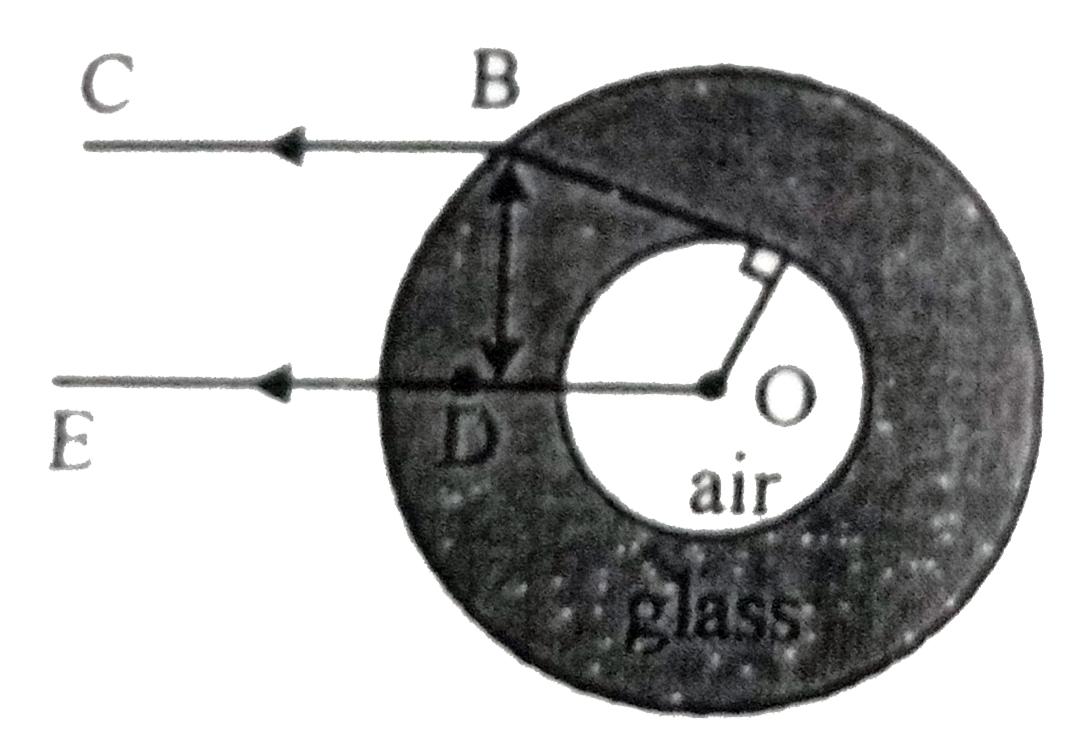Calculate the magnitude of ring strain energy in (kJ/mol) of cyclopropane from the following data
ΔfH[C3H6(g)]=55,ΔfH[C(g)]=715,ΔfH[H(g)]=220,
BE(C−C)=355,BE(C−H)=410 ( all in kJ/mol ) :
[0115]
Given

ΔH4=−B.E.(3C−C+6C−H)+Ring strain energy (RSE)
=ΔH1−ΔH2−ΔH3
R.S.E=ΔH1=ΔH1−ΔH2−ΔH3+B.E.(3C-C+6C-H)
=55−2145−1320+(3×355+6×410)
=115kJ/mol
Topper's Solved these Questions
- TEST PAPERSBOOK - BANSALCHAPTER - TEST PAPERSEXERCISE - MATHS SECTION-3 Part-C[ Integer type ]
10 Videos
- TEST PAPERSBOOK - BANSALCHAPTER - TEST PAPERSEXERCISE - PHYSICS SECTION - 1 PART-A [SINGLE CORRECT CHOICE TYPE]
18 Videos
- TEST PAPERSBOOK - BANSALCHAPTER - TEST PAPERSEXERCISE - PHYSICS SECTION-1 Part-C (Integer Type )
10 Videos
- PROBABILITYBOOK - BANSALCHAPTER - PROBABILITYEXERCISE - All Questions
1 Videos
- THERMODYNAMICSBOOK - BANSALCHAPTER - THERMODYNAMICSEXERCISE - Match the column
7 Videos
Similar Questions
Find the number of six digit number between 700000 and 800000 such that the first digit is equal to the sum of the other five digits.
View SolutionThe adjacent figure shows cross section of a hollow glass tube of internal radius r, external radius R and index of refraction n. For two rays DE and ABC (in which De lies ODE and DE is parallel to BC), the separtion r1 will be

View SolutionA steel wire is rigidly fixed at both ends its length mass and cross sectional area are 1m, 0.1 kg and 106m2 respectively then the temperature of the wire is lowered by 20∘C if the transverse waves are setup by plucking the wire at 0.25m from one end and assuming that wire vibrates with minimum number of loops possible for such a case. Find the frequency of vibration (in Hz). [coefficient of linear expansion of steel =1.21×10−6/.∘C and young's modulus =2×1011/N/m2]
View SolutionBalls are drawn one-by-one without replacement from a box containing 2 black, 4 white and 4 rd balls till all the balls are drawn. Find the probability that the balls drawn are in the order 2 black, 4 white and 3 red.
View SolutionMatch Column - I with Column-II:
Column-I(Ideal Gas)Column-II(Related equation)(A)Reversible isothermal process(P)W = 2.303nRT log(P2/P1)(B)Reversible adiabatic process (Q)W=nCVm(T2−T1)(C)Irreversible adiabatic process(R)W = -2.303nRT log(V2/V1)(D)Irreversible isothermal process (S)W=−∫VfViPext.dV
View SolutionCalculate the resonance energy of gaseous benzene form the following data.
BE(C−H)=416.3kJmol−1
BE(C−C)=331.4kJmol−1
BE(C=C)=591.1kJmol−1
ΔsubHΘ(C,graphite)=718.4kJmol−1
ΔdissHΘ(H2,g)=435.9kJmol−1
ΔfHΘ(benzene,g)=82.9kJmol−1
View SolutionCalculate the enthalpy of combustion of benzene (l) on the basis of the following data: a. Resonance energy of benzene (l) =- 152 kJ// mol b. Enthalpy of hydrogenation of cyclohexene (l) =- 119 kJ//mol c. Delta_(f)H^(Theta)C_(6)H_(12)(l) =- 156 kJ mol^(-1) d. Delta_(f)H^(Theta) of H_(2)O(l) =- 285.8 kJ mol^(-1) e. Delta_(f)H^(Theta)of CO_(2)(g) =- 393.5 kJ mol^(-1)
View SolutionCalculate the enthalpy change for the process C Cl_(4)(g) rarr C(g)+4Cl(g) and calculate bond enthalpy of C-Cl in C Cl_(4)(g) . Delta_(vap)H^(Θ)(C Cl_(4))=30.5 kJ mol^(-1) Delta_(f)H^(Θ)(C Cl_(4))=-135.5 kJ mol^(-1) Delta_(a)H^(Θ)(C )=715.0 kJ mol^(-1) , where Delta_(a)H^(Θ) is enthalpy of atomisation Delta_(a)H^(Θ)(Cl_(2))=242 kJ mol^(-1)
View SolutionCalculate C-H bond energy from the following data : Delta_(f)H" "[C(g)]=716.68 kJ//"mole" Delta_(f)H" "[H(g)]=217.97 kJ//"mole" Delta_(f)H" "[CH_(4)(g)]=-74.81 kJ//"mole"
View SolutionCalculate the magnitude of ring strain energy in (kJ/mol) of cyclopropane from the following data :
ΔfH[C3H6(g)]=55,ΔfH[C(g)]=715.0,
ΔfH[H(g)]=220,Be(C−C)=355, BE (C−H)=410(all in kJ/mole)
View SolutionDetermine C-C and C-H bond enthalpy (in kJ//mol ) Given : Delta_(f)H^(@)(C_(2)H_(6),g)=-85kJ//mol," "Delta_(f)H^(@)(C_(3)H_(8),g)=-104kJ//mol Delta_("sub")H^(@)(C,s)=718kJ//mol," "B.E.(H-H)=436kJ//mol
View SolutionThe ΔfH∘(N2O5,g) in kJ/mol on the basic of the following data is:
2NO(g)+O2(g)→2NO2(g)ΔrH∘=−114 kJ/mol4NO2(g)+O2(g)→2N2O5(g)ΔrH∘=−102.6 kJ/molΔfH∘(NO,g)=90.2 kJ/mol
View SolutionCalculate resonance energy of C6H6(g).
Given :Δf[C6H6(g)]=−360kJmol−1ΔHSub[C(graphite)]=716kJmol−1B.E.H−H=437kJmol−1B.E.C=C=620kJmol−1B.E.C−C=340kJmol−1B.E.C−H=490kJmol−1
View SolutionCalculate the enthalpy change for the process
CCl4(g)→C(g)+4Cl(g)
and calculate bond enthalpy of C−Cl in CCl4(g).
ΔvapHΘ(CCl4)=30.5kJmol−1
ΔfHΘ(CCl4)=−135.5kJmol−1
ΔaHΘ(C)=715.0kJmol−1, where ΔaHΘ is enthalpy of atomisation
ΔaHΘ(Cl2)=242kJmol−1
View SolutionCalculate the standard enthalpy or comustion of CH_(3)COOH_((l)) from the following data : Delta_(f)H^(@)(CO_(2))=-39383 KJ "mol"^(-1) Delta_(f)H^(@)(H_2O)=-285*8 KJ "mol"^(-1) Delta_(f)H^(@) (CH_(3)COOH)=-483*KJ"mol"^(-1)
View Solution
